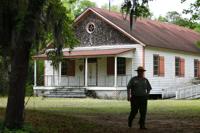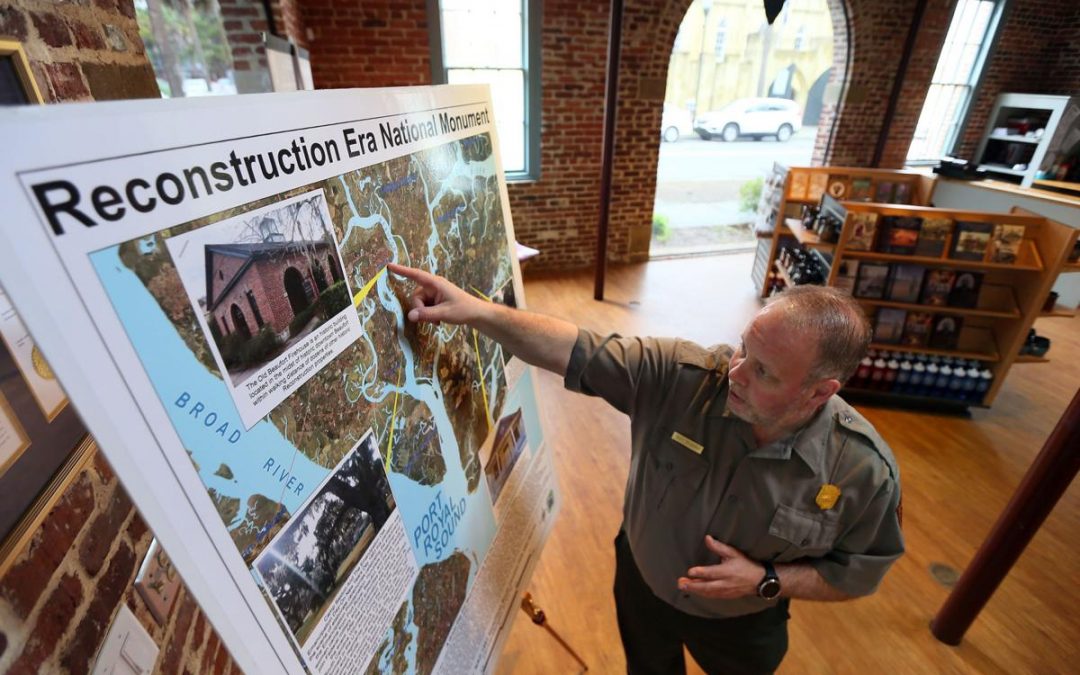The reach of South Carolina’s Reconstruction Era National Historical Park just got a little broader.
Unlike many national parks, it’s based around a period of history rather than a particular landmark or natural feature. Its address is in Beaufort County, but its intent is to teach people about Reconstruction, through sites that are both in its physical bounds and in other parts of the country.
“We’re not a traditional park,” superintendent Scott Teodorski said. “This park is dedicated to a very misunderstood and an incredibly fascinating part of history.”
Part of that mission is the formation of the Reconstruction Era National Historic Network, a coalition of historic sites important to the period of American history immediately following the Civil War. It officially launched in March 2020, a year after it was upgraded to national park status, recognizing other places managed by the National Park Service that are relevant to that era.
Now, the park has added its first community sites to the network. Eight places were recognized, all of which are located in South Carolina.
Education was the theme connecting this first round of additions, Teodorski said.
Six of the sites are historically Black colleges or universities. They include Claflin University, the first in the state to admit students with no restrictions based on race or religion; Allen University and Benedict College, both founded in 1870; South Carolina State University, a land-grant institution started in 1897; Vorhees College, first established as a high school for Black residents; and Clinton College, started near the end of Reconstruction with a goal of eradicating illiteracy.
The Mather School, which provided education to formerly enslaved women in the Beaufort area during Reconstruction, and Rose Hill Plantation State Historic Site, managed by S.C. State Parks, were also added.
Each network member receives an exhibit and a sign that designates it as part of the program. Sites are also listed on a National Park Service webpage. But the biggest benefits, Teodorski said, will come from future collaboration with park staff. They might co-host Reconstruction-related events with the sites, facilitate research and assist places seeking to get on the National Historic Register.
This is an exciting time to be studying Reconstruction, Teodorski said. The long-neglected period of U.S. history has yielded new discoveries in recent years.
While historians differ on how they define the Reconstruction Era, the Beaufort-based park considers it to be from 1861 to 1900.
That timeline puts the start of Reconstruction several years before the end of the Civil War, for a reason that’s directly connected to why the park was established in South Carolina. Union forces took control of the present-day Beaufort area in 1861. That prompted an early start to the same changes that would later happen all across the South.
“All those elements of Reconstruction took root here,” Teodorski said.
Working with their new community partners will be an extension of how the park already operates, Teodorski said. Because the park’s sites are scattered in a few different places, community partnerships have been necessary to operate.

Reconstruction Era National Historical Park Superintendent Scott Teodorski at Darrah Hall at the Penn Center. File/Wade Spees/Staff
Darrah Hall, for example — a community center built in the 1890s — is located right behind St. Helena Island’s Penn Center, and the Emancipation Oak in Port Royal is only accessible by entering the grounds of the Naval Hospital.
It won’t be long before more community sites are added to the network. The park is taking applications and already has some in the queue, including ones outside the Palmetto State. The next sites will likely be announced in January.
–postandcourier.com



